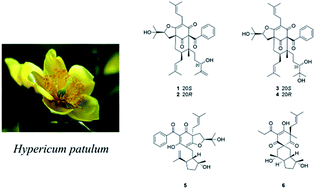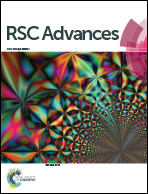Hyperpatulones A–F, polycyclic polyprenylated acylphloroglucinols from Hypericum patulum and their cytotoxic activities†
Abstract
Six new compounds, hyperpatulones A–F (1–6), along with ten additional known related derivatives (7–16), were isolated from Hypericum patulum (Guttiferae). Their structures were elucidated by extensive analysis of spectroscopic data (IR, UV, HRESIMS, 1D and 2D NMR), X-ray crystallography, electronic circular dichroism (ECD) spectroscopy and Rh2(OCOCF3)4-induced ECD. All compounds were tested for their cytotoxic activities on human HepG-2, HeLa, MCF-7, and A549 cell lines via 3-(4,5-dimethylthiazol-2-yl)-2,5-diphenyltetrazolium bromide (MTT) assay. Compound 5 exhibited significant cytotoxicities against HepG-2, HeLa and A549 cell lines with IC50 values of 9.52 ± 0.27, 11.87 ± 0.22 and 12.63 ± 0.12 μM, respectively.



 Please wait while we load your content...
Please wait while we load your content...